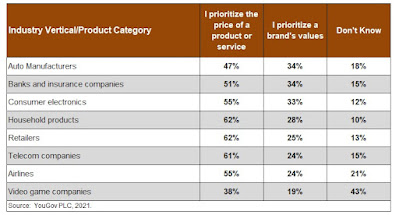At some time in our lives, most of us have experienced anxiety when we're faced with a major decision. In most cases, the level of our anxiousness is proportional to the potential ramifications of the decision we are facing. When the stakes are high enough, we can easily be tempted to avoid making a decision at all.
This phenomenon can affect both personal and business decisions. Many B2B companies track their sales performance by categorizing the outcomes of potential deals as wins, losses or no decisions. Typically, no decision is a catch-all category used for those potential deals that are neither successfully closed nor lost to a competitor.
Several research studies have shown that B2B companies lose more sales to no decisions than to competitors. For example, a recent large-scale study by Matthew Dixon and Ted McKenna found that between 40% and 60% of prospective sales result in no decision. In many cases, a potential customer will go through a thorough buying process, but ultimately fail to make a purchase.
Rational No Decisions
Some no decisions are entirely rational. For example, a prospect may decide not to make a purchase because their current solution is objectively superior (or at least nearly equivalent) to the proposed alternatives. In such cases, the proposed alternatives don't provide enough value to justify making a change. Or, a downturn in the financial condition of a prospective customer can result in the implementation of cost controls that effectively take the proposed purchase off the table.
The Status Quo Bias
Frequently, however, a prospect's decision not to make a purchase can't be explained on a rational basis. In such cases, psychologists and behavioral economists attribute the no decision to the status quo bias, a powerful cognitive bias that causes humans to prefer the status quo for non-rational reasons.
Psychologists demonstrated the existence of the status quo bias in the late 1980's. and since then, behavioral scientists have been attempting to identify the underlying cause or causes of the bias. The current thinking is that the status quo bias is probably caused by other biases in human decision making.
Daniel Kahneman has argued that the status quo bias is closely related to loss aversion. Loss aversion is the human tendency to prefer avoiding loses to acquiring equivalent gains.
Research by Kahneman and Amos Tversky in the 1970's showed that, for humans, the pain of a loss is psychologically twice as intense as the pleasure felt from an equivalent gain. Because of this effect, most people are risk averse, and they will tend to avoid making a decision that involves a risk of loss even when the decision could result in substantial gains.
Kahneman contends that most people make the status quo their reference point and tend to view change from the status quo as a loss, which makes them inclined to prefer the status quo.
Richard Thaler has argued that the status quo bias is closely related to a cognitive bias called the endowment effect. This bias refers to the fact that most people like and value something more simply because they already own it. The endowment effect can cause us to overvalue the benefits of the status quo and to under-appreciate its disadvantages.
Customer Indecision Also Drives No Decisions
While the status quo bias is an important cause of no decisions, recent research indicates that it isn't the only or most significant cause.
In an article published last month at the Harvard Business Review website, Matthew Dixon and Ted McKenna wrote that their research had shown that 56% of no decisions were caused by the inability of prospective customers to make buying decisions - what they called customer indecision - while only 44% resulted from a preference for the status quo. This research also found that 87% of sales opportunities contained moderate or high levels of customer indecision.
Dixon and McKenna argued that overcoming customer indecision requires a different "playbook" than the one used to overcome the status quo bias. As they wrote, "Where overcoming the status quo is about dialing up the fear of not purchasing, overcoming indecision is about dialing down the fear of purchasing."
The authors' research found that top performing sales reps use four distinct behaviors - which they call the JOLT Method - to overcome customer indecision.
- "Judge the level of customer indecision" - Top sales reps assess the level of customer indecision that exists in every sales opportunity and qualify opportunities based on those assessments.
- "Offer their recommendations" - The most successful sales reps will - at the appropriate point in the sales process - recommend what the prospective customer should buy.
- "Limit the exploration" - Top performing sales reps recognize that prospective customers can easily become overloaded with information and that the result of information overload is often "analysis paralysis." Therefore, they use information selectively to guide prospective customers to the best decision possible.
- "Take risk off the table" - High-performing sales reps offer prospective customers "safety nets" that reduce the risks associated with making a purchase.
- Confidence in the specific product or service under consideration
- Confidence in their company's ability to successfully implement any organizational changes required to reap the full benefits of the product or service purchased
- Confidence in the soundness of the process used to make the purchase decision










